Introduction
For some reason, I would like to understand common features between the lightning protection designers’ work style and that of a team engaged in any other human activity. The options were surprising or even bewildering. In terms of developed initial data analysis approaches, the lightning protection expert appeared to be even closer to the operations of the State General Staff of a country in a state of active war.
After initial puzzlement, the result ceased to be so surprising. The opponent, indeed, exists in both cases. It is well known and its primary weapons are generally known. However, details are not that clear. They are certainly incomplete, and a part of them is inaccurate. Moreover, you cannot always tell more or less reliable information from complete lies offered by the opponent. To make things clear, you need an additional survey although you have no time for that. The solution is to be taken immediately. Staff and equipment losses depend on it. A mistake is costly, and sometimes very costly. Under some conditions, it is even unacceptable, but we will surely not be able to detail the initial data. Months and years of hard work may be needed for that.
Lightning is the most powerful natural source of pulse current and, hence, the electromagnetic field. The interference created in electrical circuits is estimated in many thousand volts. Any equipment should be tested for such interference to estimate their dangerous levels. This is not an easy experimentation. To perform the work, you need a costly testing bench and special test mock-ups, i.e. non-living mock-ups. During the tests, they can be destroyed, and if the tests were unsuccessful, you should re-test them. Ultimately, money is not everything.
A living creature is also an object affected by the lightning but it cannot be imitated in any way. It should not be damaged during tests, which means that, under many important conditions, it cannot be the test object. Surely, you can use animals, if we ignore animal protection regulations. You cannot obtain absolutely reliable data here, and it is more than just about a purely ethical context. You can try to conduct model tests with reduced voltage and further extrapolate the results. This provides good results in the systems close to linear. However, human is a non-linear system. The human body resistance may vary within several orders of magnitude depending on electrical current exposure conditions. Here, you can hardly rely on your luck. Nevertheless, there is no other way out. The solution should be taken today with no significant mistakes. This is how the situation looks like. À la guerre comme à la guerre. You cannot complain.
Recently, an active work on developing regulatory documents on electrical safety has been performed in Russia. They should advance to a microsecond time range typical of the lightning exposure. The work should be guided by the IEC research published in regulatory documents IEC 70646.1 Electrical Current Effects of Humans and Pets. General Aspects and IEC 70646.2 Special Aspects.
The information provided therein is essentially based on animal experiments and data obtained through clinical observations. Only single experiments with low, short currents, which are not too dangerous, were conducted with volunteers. For this reason, the materials provided are not sufficiently reliable, especially within a microsecond time range typical of the lightning current exposure. In this respect, a preliminary examination of the IEC regulatory materials should be made, the more so they have been published and are now available for the experts’ review.
Two issues are of the most interest, such as
- change dynamics of the complex human body impedance depending on value, type, and exposure time of the pulse current,
- estimation of currents of various lengths and their paths through the human body, which may lead to irreversible consequences, primarily, to the fatal heart ventricle fibrillation.
Human is a non-linear electrical system
Our family story jokingly tells about school years of my wife. When she was in the third grade and told about the human body according to the new student’s book, the teacher asked her: What is under your skin? The immediate answer was as follows: “A skeleton and some meat.” The answer is correct from the viewpoint of high-voltage equipment. At high voltage, the high-ohmic skin layer is broken through by an electrical discharge. It is like it doesn't exist anymore. Hundreds of thousand ohms that can be measured using a tester characterize the yet undamaged skin layer at several dozen volts.
The larger the voltage, the lower the measured resistance. Reduction is like an avalanche that can be seen rather clearly. This is, e.g., the way the complex impedance changes along the current path through a hand to another hand in dry conditions upon
significant hand contact with a conductive surface. The results have been taken from the IEC standard. They demonstrate complex human body impedance at various touch voltages (left column). Three right columns provide threshold measured values (Ohms), respectively, in 5%, 50%, and 95% of subjects.
In increased humidity, the human body reactance decreases even more dramatically, although in case of low voltage only, when the skin layer is not yet damaged.
Table 2
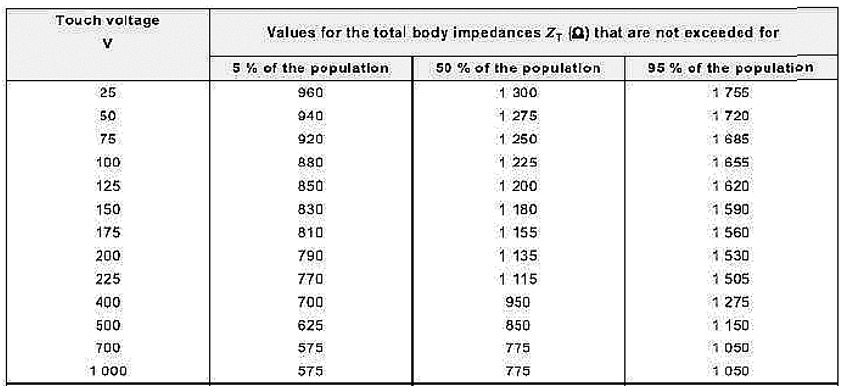
Measured complex human body impedance in humidified air
Frequency of the affecting voltage is of major significance. Its growth leads to increased affecting voltage at which a particular human body exposure can be observed, i.e. the tingling sensation.
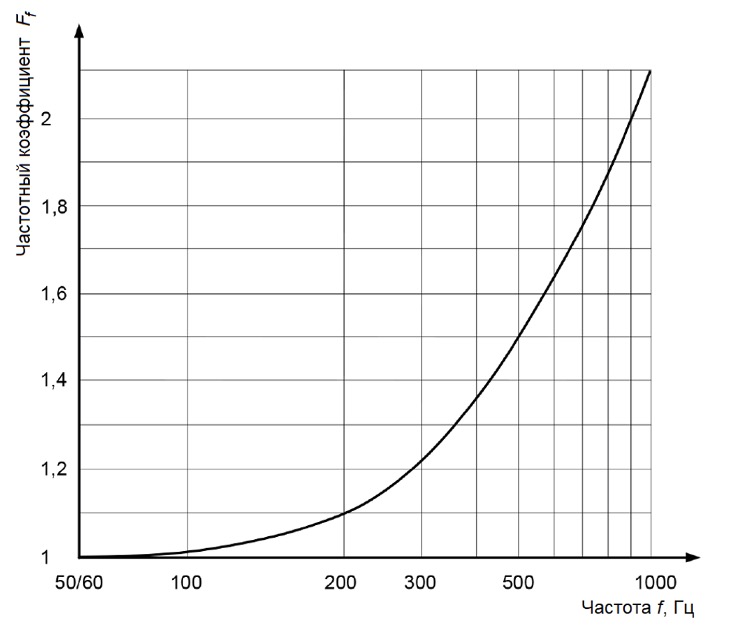
Fig. 1. Factor of increasing the sensitivity threshold for frequency range of 50/60 to 1,000 Hz
Частотный коэффициент - Frequency ratio
Частота f, Гц - Frequency f, Hz
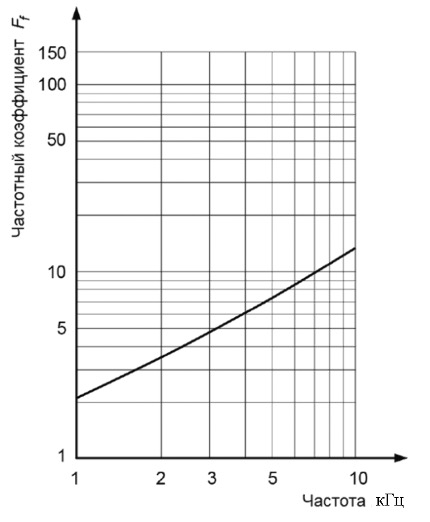
Fig. 2. Factor of increasing the sensitivity threshold for frequency range of 1 to 10 kHz
Skin effect is efficient at ultra-high frequency. The current is displaced outwardly and does not almost load the human’s internal organs. I remember getting to know this phenomenon. We were the students selected for the High-Voltage Equipment Department who were standing before the Tesla’s transformer. If forms high-frequency voltage pulses at a mega-volt level. An employee of the department, L.F. Dmokhovskaya, who was holding an output bus of the generator being in operation, stood smiling while surrounded by long, bright channels, somehow resembling an alien as it is represented in the Renaissance paintings. Theoretically, we already knew the effect, but nobody took the chance to stand there instead of the employee.
As the time reduces, the allowed voltage naturally increases. This can be seen from the provided results. However, the table does not give any information on hazardous voltage during the lightning strike. The minimum voltage exposure time in the table is 0.01 sec, which is two orders of magnitude larger than the lightning current length, which is around 100 mcs.
What does a lightning protection designer have?
At least two orders of magnitude separating the “household” hazardous voltage exposure time from the lightning current length cannot be covered by the data extrapolation. We need an experiment with direct measurements of hazardous voltage. The materials provided by IEC are intended for this although the authors have neither described the measurement technique nor provided information on measured values analysis. However, we cannot choose. There are simply no other data. The figure shows time sufficient for causing ventricle fibrillation at specified current.
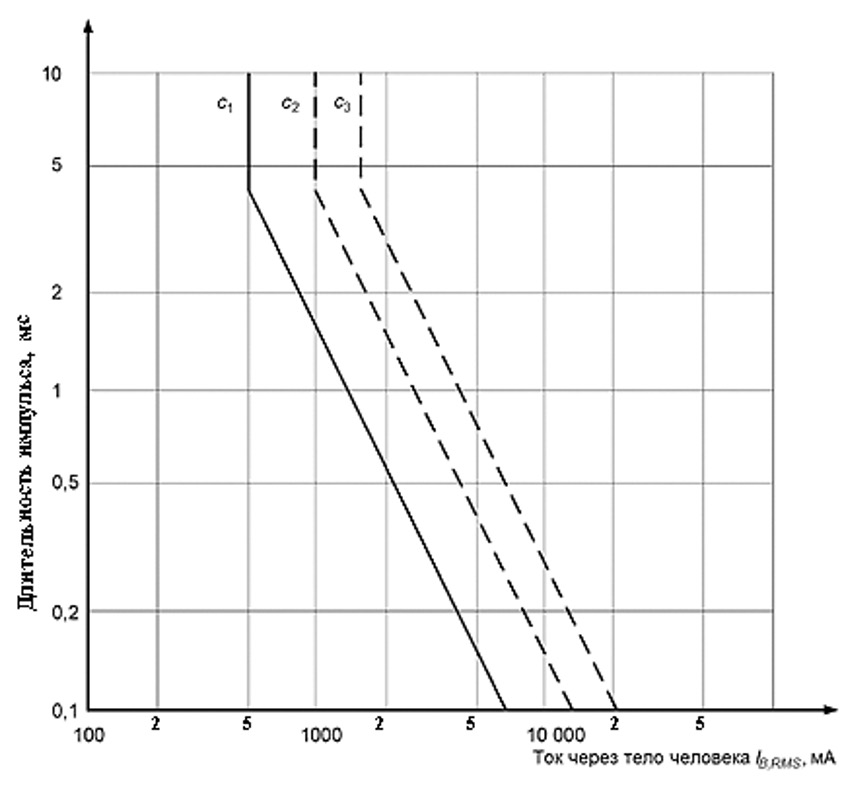
Fig. 3. Time of causing ventricle fibrillation at various currents
Длительность импульса, мс - Pulse length, msec
Ток через тело человека - Current flowing through the human body
The solid left curve matches the occurrence of fibrillation with the probability of 5%, and two other curves (dashed lines) have the probability of 50 and 95%. Dashed lines themselves cause questions, such as: Where these dependencies were taken from? Are those real-life measurements or some kind of extrapolation? Certainly, there is no answer to them. Nevertheless, there are also no other data. We have nothing to compare with. We have to use what we have. There is also a series of unanswered questions.
Thus, the IEC documents affirm that low duration pulses with relatively low energy cause fibrillations only upon exposure within a particular sensitive period of the cardiac cycle. The result has been obtained in animals. What about human? Is there any difference in terms of duration of this sensitive cycle for human compared to tested animals?
For high-energy pulses affecting out of the sensitive period of the cardiac cycle, fibrillation may occur with a delay of several minutes or even hours. What is the mechanism underlying such a delay? Is it associated with physiological processes within the body or with a human mind? There is no answer and it cannot be. Moreover, the IEC materials are not exhaustive. They do not cover exposure times less than 100 mcs. It is insufficient to evaluate the lightning danger. We need to re-calculate it to at least microseconds. This is the actual duration of pulse interference at the lightning current wave front. How to re-calculate if the mechanism of the current impact on human is not well-known yet? In this situation, we can only propose a formalized re-calculation based on constant charge flowing through the human body or constant energy released there. In the first case, the expression to re-calculate current from the exposure duration t1 to duration t2 is used as follows:
i2 = i1t1/t2
Assuming that the energy is constant, the re-calculation expression is as follows:
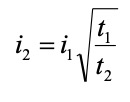
Numerical tests using the IEC data for current exposure time 0.1-10 msec provided herein have shown that re-calculation results for both constant energy and constant charge are not allowed since they lead to an error at the level of several hundred per cent.
Re-calculation using geometric average, among the above options, is much more interesting, which is provided by the following expression
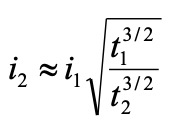
also having real although significantly lower error. The approach is unpromising but it is better than nothing.
It is time now to return to the Russian lightning protection standards. The existing standards do not contain any information on safety in storm conditions. However, using indirect indicators, we can suggest that the human safety issue was not prevailing when the regulatory documents were developed. Guidelines RD 34.21.122-87 provide options of sample grounding arrangements for lightning arresters. The most relevant arrester (provided as a 10 m horizontal bus with three 5 m vertical rods), in the soil with resistivity ρ, has a grounding resistance of
RЗ ≈ 0,07ρ (Ом)
This kind of standardizing can hardly be regarded as a human safety concern.
Fig. 4. For estimation of touch and step voltages
In a widespread soil with resistivity 1,000 Ohm m, the lightning current of 100 kA (protection level III) will create the voltage of 7,000 kV on such grounding arrangement. Even a high-voltage power line will not be able to withstand this!
If we take limit current of 7 A and human body resistance of about 600 Ohm (see Table 1), the limit voltage affecting human body upon lightning current spreading should not exceed 4 kV. It is beneficial to evaluate conditions, which will not violate this requirement. The above shows the touch voltage for the grounding arrangement as recommended in Guidelines RD 34.21.122-87. Even in a high-quality soil with resistivity of 100 Ohm m at current of 30 kA (average lightning), it exceeds 100 kV. To limit the touch voltage at 4 kV, the grounding resistance would have to be reduced by at least 25 times by taking it to about 0.3 Ohm. A skin effect in the soil may be an obstacle to such a low grounding resistance. Moreover, 30 kA current is hardly a limit for the lightning. Even for protection level III, the lightning protection standard SO-153-34.21.122-2003 prescribes to use the lightning current of 100 kA, and in this case, the limit grounding resistance should be lower than 0.1 Ohm. This is an incredible low value in the pulse mode. It means that safety of people surrounding the lightning arrester should be provided by other technical means rather than by reducing the grounding resistance, primarily, by adding an additional high-resistance element between the current collector and the human hand or between his/her leg and the ground surface. In the latter case, asphalt can be successfully used. Its layer about 10 cm thick is a pretty good protection. Unfortunately, this is not the case with tiles. Tiles installed on the ground with a mandatory gap may provide good human/soil contact, when it rains.
The protective insulation of the current collector is also pretty efficient, especially if its structure uses a semiconductive coating effect that equalizes the electric field distribution over the insulation surface.
The step voltage is always less dangerous than the touch voltage. You can easily see it from the arrangement shown in Fig. 4. Nevertheless, the reason is not only in that the exposure is lower than of the touch voltage, but also because of a more lengthy current path along the human body to the cardiac muscle, which results in the increase of the complex impedance determining the actually delivered current. However, in typical soils, it can be hard to set the step voltage to the safe level by reducing the grounding resistance. Here, we have to rely upon insulated coatings
To avoid omissions and design errors, we have to standardize the allowed voltage affecting a person directly, and this value should be different for touch and step voltages. It is up to the designer to decide on how to limit these parameters to the safe level. I understand that the authors of the new regulatory document face challenging options in terms of allowed parameters values. We don't have enough reliable initial data both because of their non-clear international origin and in terms of statistics. We have to consider many aspects, including non-obvious phenomena as well, e.g. a possibility of human body's reaction to high voltage with a significant time delay. We can hardly predict the contents of the new standard. But there is one point that is totally clear today: we will certainly have sufficient material for serious discussions. And we will surely use it in the nearest future.
Related Articles:
 Webinar of Professor E.M. Bazelyan Titled "Key Aspects of Practical Lightning Protection"
Webinar of Professor E.M. Bazelyan Titled "Key Aspects of Practical Lightning Protection"
 Is Terawatt Laser A Revolution in Lightning Protection? Opinion of Prof. E.M. Bazelyan
Is Terawatt Laser A Revolution in Lightning Protection? Opinion of Prof. E.M. Bazelyan

